Finally, May has arrived! A month of park picnics and outdoor apéritifs.
Let’s get into it:
May Book Selections
I hereby declare European summer pregame as the vibe for May.
Reading recommendations for the month ahead include:
The Talented Mr. Ripley by Patricia Highsmith (1955) — The book of my summer 2024! Nothing says “almost June” like the adventures of a burgeoning serial killer across and beyond the Italian coast. The basis for Anthony Minghella’s sun-soaked 1999 film adaptation, The Talented Mr. Ripley (1955) inhabits the paranoid mind of Tom Ripley. He travels from New York to the fictional coastal town of Mongibello with the mission of persuading Dickie Greenleaf, the son of shipping magnate Herbert Greenleaf, to return to the United States. Swept up in Dickie’s lifestyle, Tom develops an obsession that turns dangerous.
Highsmith adopts a close third-person perspective throughout her psychological thriller, creating a chilling kinship between Tom and the reader. She starts the novel with: “Tom glanced behind him and saw the man coming out of the Green Cage, heading his way. Tom walked faster. There was no doubt the man was after him. Tom had noticed him five minutes ago, eyeing him carefully from a table, as if he weren’t quite sure, but almost. He had looked sure enough for Tom to down his drink in a hurry, pay and get out.” As I discuss in my review: “These opening lines…mimic the feeling of a hot pursuit experienced in parallel…[with the novel establishing] a sense of unwanted emotional intimacy that defies logical thought; she leaves the reader rooting for the novel’s sociopathic titular character without real reason, a high-wire act that underscores the unnerving subjectivity of morality.”
Ripley Under Ground by Patricia Highsmith (1970) — Once you finish The Talented Mr. Ripley (1955), delve into Patricia Higsmith’s art world-immersed sequel. The setting switches from Italy to France, establishing the framework for the rest of the series: Tom Minding His Own Business at Belle Ombre, the country estate where he resides with his wife, Heloise, when something disrupts his peace.
The second book in the Ripley series, Ripley Under Ground (1970) follows the fallout from forgeries at The Buckmaster Gallery in London. Tom has helped establish the scheme in exchange for 10% of the profit, an idea that comes back to bite him when an American collector questions the authenticity of a sale. Highsmith perpetually underscores the art of the con; as I write in my review, “forgery, the mastery it requires, emerges as a primary theme throughout the novel, with Ripley and his peers repeatedly raising the question of whether a replication carries equal or greater value compared to the original.”
The Anthropologists by Ayşegül Savaş (2024) — This lyrical novel from Turkish author Ayşegül Savaş distills youth, aimlessness, and the experience of artistic pursuit, set against the backdrop of an anonymous city. Per the April Book Review:
[It] adopts the first-person perspective of Asya, an expat living in an unspecified foreign city with her husband, Manu. Asya and Manu come from two different cultures, the specifics of their backgrounds abstracted. They form a shared life, a mutual language, on neutral ground, far away from their families. The narrative inhabits Asya and Manu’s bubble, drawing its meaning from minutiae. It traces the mundanity of their days, from drinking beer with their friend, Ravi, to reading poetry with their elderly upstairs neighbor, Tereza. Asya and Manu’s hunt for a to-purchase apartment occurs in the background, punctuating this particular phase as a waning one…Notions of biological versus found family permeate the narrative. When chosen connections splinter, the fragility of youth gets laid bare. In turn, The Anthropologists (2024) emerges as a novel about recognizing and mourning transience.
Last Summer in the City by Gianfranco Calligarich (1970) — As I write in the 2024 August Book Review, “this Italian novel distills a kind of midcentury listlessness that has prompted comparisons to F. Scott Fitzgerald’s The Great Gatsby (1925) and J.D. Salinger’s Catcher in the Rye (1951)…A true ‘no plot, just vibes’ novel, Last Summer in the City (1970) follows its narrator, Leo, as he meanders through Rome, in and out of love, jobs, and friendships.” The city and the sea operate at opposite spiritual poles, with Leo traversing between the two beneath the burnt Italian sun.
Good Girl by Aria Aber (2025) — This debut novel from poet Aria Aber traces a year in the life of an Afghan party girl living in Berlin, distilling the same fever dream quality that defines Marlowe Granados’s coming-of-age novel, Happy Hour (2020). As I write in the April Book Review:
Set in the summer of 2010, Good Girl (2025) centers on Nila, an 19-year-old Afghan girl born and raised in Berlin to immigrant parents. At a bunker-turned-club, she meets Marlowe, an American novelist twenty years her senior (“I usually liked my men blond and severe or dark and tar, but Marlowe was neither, somewhere smack in the middle, with a square jaw and dimpled chin, the nose of an emperor…He was a prince who moved through rooms as if they belonged to him, surrounded by a large group of friends, among them his blond girlfriend, who in my memory always wore a Sonic Youth shirt.”). A fraught artistic and sexual connection emerges, catalyzing Nila’s public and private exploration of identity (“Marlowe and I had been ignoring each other — we danced through the cosmos of parties, but the moment he came too close to me, I would move in the opposite direction.”).
Raised in Germany by Afghan parents, Aber writes in English, her third language. She cites James Baldwin, Marguerite Duras, and Jean Rhys as influences, while praising the contemporary work of Raven Leilani and Garth Greenwell. Speaking with American author Kyle Dillon Hertz for Interview Magazine, Aber explains: “I really love her [Rhys’s] take on the stream of consciousness and the kind of deranged exilic woman stumbling through a city.” Good Girl operates as a 21st century enactment of that literary tradition, capturing the post-9/11 Arab and Persian experience through the particular prism of Berlin. Hertz praises Good Girl as a “poet’s novel,” a fitting description for a novel with language as its crown jewel. For instance, describing the connection Nila feels to Marlowe, Aber writes: “The eros…drew strings between us sometimes so taut they produced a sweet and secret sound. But the friction was frail — it was never meant to make real music, just to suggest its existence, like a violin encased in glass at a museum, so old and brittle it would fall apart if you tried to play it.”
Told from an intimate first-person point of view, Good Girl bears structural similarities to Adam Ross’s Playworld (2025) and Bret Easton Ellis’s The Shards (2023). All three novels trace a transformative year in the lives of their respective protagonists, recounted by an older iteration of that individual…[In Good Girl,] the option of ethnic ambiguity propels dramatic tension. Nila passes as Greek, as a whole host of backgrounds other than Afghan, to evade the discrimination that accompanies her real identity. The possibility of discovery drives her anxiety, its stakes heightened by the setting of Berlin — a city “particular and historical and shattering.” Discrimination in all its forms — from islamophobia to antisemitism — lurks, then creeps to the foreground…[Aber] distill[s] the reality of what it means to pass as an ethnicity other than your own. Physical ambiguity coaxes people into revealing their prejudices, blinded by the illusion of unmixed company.
Upcoming Content to Consume
First things first, New York-based subscribers can catch three out of the four films discussed in the April Movie Review in theaters this May. Claude Lelouch’s A Man and a Woman (1966) and Federico Fellini’s 8½ (1963) play at Film Forum through 5.8, while Bonjour Tristesse (2025) opens at IFC Center on 5.2.
Despite my meh feelings about the new Bonjour Tristesse, I do ultimately consider it worth watching, if only for the dual visual vacation of the French Riviera and Claes Bang, and specifically followed by an at-home airing of the far superior Otto Preminger adaptation from 1958.
Now, here’s what else is on this month:
The Paris Theater: Goodfellas (1990) (Date: 5.2) — I’m once again here to remind you that, if a theater screens Goodfellas (1990) and a million people talk about it, I’m one of them. If a theater screens Goodfellas and ten people talk about it, I’m one of them. If a theater screens Goodfellas and only one person talks about it, that’s me. If a theater screens Goodfellas and no one talks about it, then I’m dead.
Martin Scorsese’s mob masterpiece, my favorite film of all time because I have the taste of a Gen X man and a crush on 90s Robert De Niro, will play at The Paris Theater on Friday. Film critic and historian Carrie Rickey will moderate a Q&A with the one and only Lorraine Bracco to accompany the screening!
If you miss this one, IFC Center plans to screen a 4K restoration for the film’s 35th anniversary starting on 5.16. You can check out details here!
The Scremes Report Newsstand (Date: 5.5) — One of my favorite Substacks, Scremes Report, run by Shawn Cremer, is celebrating its first birthday at BETTY on the Lower East Side this Monday! In tandem with Shawn’s recent ode to literary magazines, the open house will include a news stand featuring issues of Cake Zine, Let’s Stab Caesar, and more. If you’re not already subscribed, Scremes Report offers the most comprehensive weekly breakdown of readings and events across the London, LA, and New York literary scenes.
You can RSVP here and drop by between 5:00 and 10:00 PM on 5.5.
McNally Jackson Festival: Preservation of Record (Opening Date: 5.7) — This month, McNally Jackson launches its first-ever festival, dedicated to the notion of the archive. Programming addresses how power and subjectivity impact preservation through the prism of topics ranging from Wikipedia to public art to Palestine.
You can review the full agenda, featuring 40 thinkers across five weeks, here.
Metrograph: American Graffiti (1973) (Date: 5.10) — George Lucas’s masterpiece (I said what I said) and one of my favorite films of all time, American Graffiti (1973) follows a group of recent high school graduates — played by then-unknown, now-iconic actors from Harrison Ford to Richard Dreyfuss to Suzanne Somers — through a summer night in Modesto, their last before heading to college the following morning. Set in 1962, this bittersweet, slice-of-life story comes with one of the best movie soundtracks of all time — with a jam-packed playlist of 41 jukebox classics.
The film plays as part of Candy Clark: The Girl Who Fell to Hollywood, a new series opening at Metrograph this month. Writer Sam Sweet will moderate a Q&A with Clark as part of the American Graffiti screening at 2:15 PM on 5.10. Snag tickets here!
Film Forum’s Jack Lemmon 100 Series (Opening Date: 5.16) — To celebrate Jack Lemmon’s centennial year, Film Forum has programmed a two-week festival celebrating the iconic actor’s work. Lemmon delivered some of the most memorable performances of the 20th century, from Jerry, the anxious bassist in drag from Some Like It Hot (1959), to C.C. “Bud” Baxter, the depressed office worker who lends out his Upper West Side apartment for extramarital affairs in The Apartment (1960).
The festival line-up includes Some Like It Hot, The Apartment, The China Syndrome (1979), Missing (1982), Glengarry Glen Ross (1992), and more. Several of Lemmon’s family members, his Avanti! (1972) co-star Juliet Mills, and Bob Odenkirk, who’s currently starring in Glengarry Glen Ross on Broadway, will join select screenings as special guests. You can see further details and book tickets here!
The Paris Theater’s Hitch! The Original Cinema Influencer Series (Opening Date: 5.16) — The Paris Theater just unveiled a new upcoming festival dedicated to the one and only Alfred Hitchcock. Co-presented by The New York Film Critics Circle, the programming features 59 films from the Master of Suspense, with 35mm screenings slated for Suspicion (1941), Shadow of a Doubt (1943), Rope (1948), Strangers on a Train (1951), Rear Window (1954), Dial M for Murder (1954), Vertigo (1958), North by Northwest (1959), and more.
Select movies that influenced Hitchcock and reflect his broader impact — from Diabolique (1955) to The Bride Wore Black (1968) to Cape Fear (1991) — will also screen as part of the series. In an email to users, Letterboxd also reports “two rare wartime propaganda shorts directed by Hitchcock; two classic episodes of Alfred Hitchcock Presents, preserved by the UCLA Film & Television Archive; two documentary features on Hitchcock from Mark Cousins & Kent Jones; and one answer to the question, ‘What if Alfred Hitchcock made a Looney Tunes cartoon?.’”
For folks outside New York, Netflix, which bought The Paris Theater in 2019, will make a collection of Hitchcock films available for streaming in the United States starting on 6.1.
The Center for Fiction: Highsmith in the Morning with Regina Porter (Date: 5.17) — This month, The Center for Fiction will mount a one-day writers’ workshop led by American playwright and novelist Regina Porter, who wrote one of my favorite books, The Travelers (2019). The session will focus on the art of the literary mystery, using Patricia Highsmith’s The Talented Mr. Ripley (1955) as an exploratory lens.
Occurring from 11:30 AM to 4:30 PM with a one-hour lunch-break, the session will address why we have seen so many versions of Highsmith’s high-rolling sociopath, what a “literary” mystery looks like today, and how Highsmith’s use of time, place, and suspense coalesce to ensure The Talented Mr. Ripley’s cultural longevity. After that discussion, participants will develop their own work using creative writing prompts.
You can check out more details here!
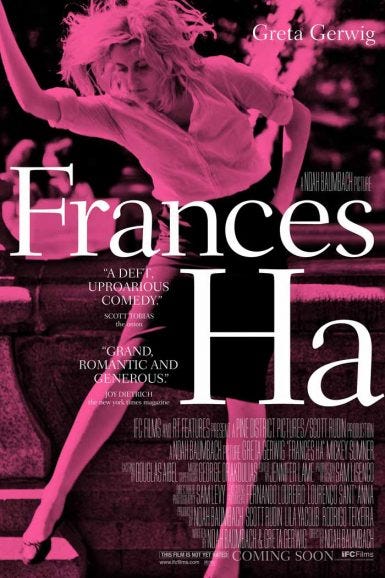
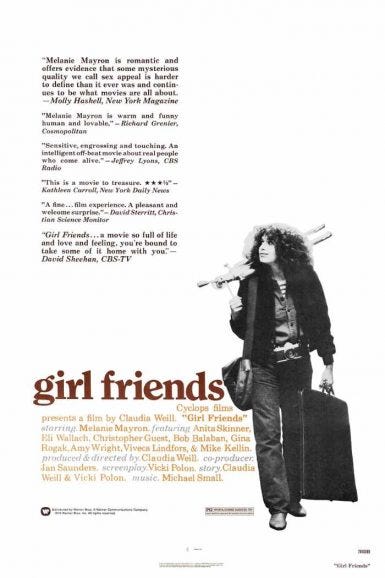
New Beverly Cinema: Frances Ha (2012) and Girlfriends (1978) Double Feature (Dates: 5.30-5.31) — A perfect thematically tied double feature! I watched Frances Ha (2012) and Girlfriends (1978) back to back in the summer of 2023 and found myself struck by the timelessness of these coming-of-age films. Both amplify a late twenties moment when a certain flavor of best friendship morphs; its intrinsic codependency cracks, casting artistic exploration as a solitary activity.
Frances Ha marks the second collaboration between Noah Baumbach and Greta Gerwig. Shot in black and white, the film opens with its titular character, 27-year-old dancer Frances Halladay (played by Gerwig), living in Brooklyn with her best friend from college, Sophie (played by Mickey Sumner). When Sophie moves to Tribeca with a different friend, Frances finds herself unable to afford their apartment and moves to Chinatown. Their lives shift in different directions as Sophie gets sucked into a new orbit with her boyfriend, Patch (played by Patrick Heusinger), while Frances searches for a semblance of career stability — and purpose within her path.
Directed by Claudia Weill and written by Vicki Polon, Girlfriends engages with similar themes and narrative beats against a late 70s backdrop. (Quick fun fact: Lena Dunham, a huge fan of Girlfriends, invited Weill to direct an episode of Girls’ second season.) In it, photographer Susan Weinblatt (played by Melanie Mayron) shares an Upper West Side apartment with her best friend, Anne (played by Anita Skinner), an aspiring writer. Susan photographs newborns, weddings, and bar mitzvahs while dreaming of getting her work into a gallery. When Anne marries her boyfriend, Martin (played by Bob Balaban), and moves out of the apartment, Susan finds herself facing the future of her artistic ambition alone.
Miscellaneous Musings
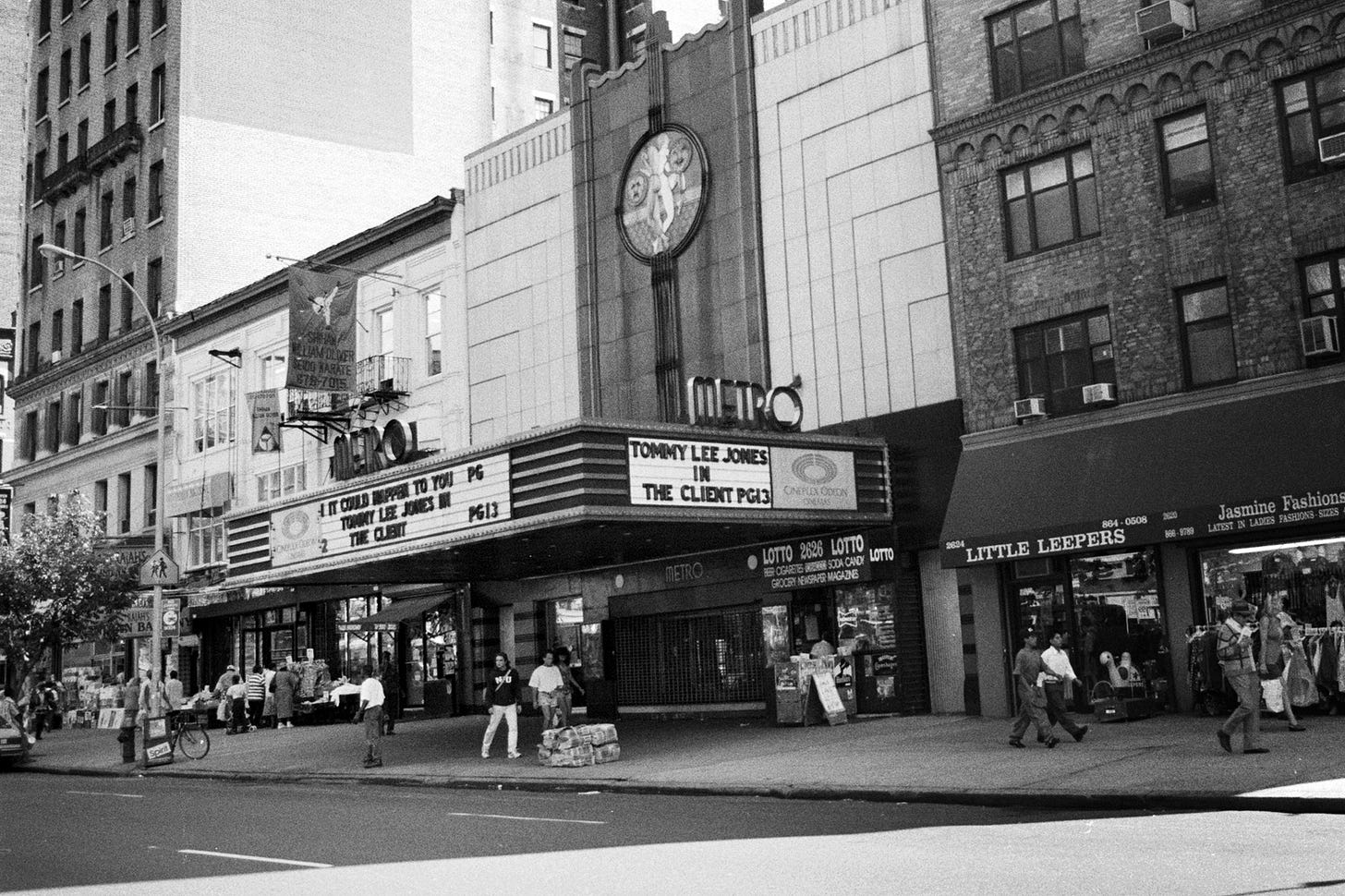
Independent Cinema Returns to the Upper West Side — In 1970, two film gurus rented out a room on the second floor of a building on Manhattan’s Upper West Side, at 256 West 88th Street. They packed it with 50 folding chairs, playing movie after movie on a 16mm projector and pull-down screen. This place, The Film Forum, ran for five years before dropping the “the” and relocating to SoHo in 1975. Today, Film Forum feels synonymous with the pulse of downtown Manhattan — but it started as an uptown staple.
In 1934, eighteen movie theaters populated Broadway between 59th and 110th Street. By 1960, that number sliced in half, as The New Yorker reports. Lincoln Plaza Cinemas operated as one of the neighborhood’s major mainstays from 1981 until 2018, cracking open a cultural void with its closure. A group of local movie lovers founded New Plaza Cinema as its spiritual successor. The nonprofit — dedicated to screening independent, foreign, and classic films — bounced around the neighborhood, from the JCC to Symphony Space to an old church, before settling in its current home at Macaulay Honors College on West 67th Street. Today, it operates as the only independent cinema north of 14th Street, a status on the precipice of changing.
News recently broke that the long-closed Metro Theater on 99th and Broadway will reopen as an arthouse theater “thanks to grants from the city and state of New York and private donors including the Kate Capshaw and Steven Spielberg Hearthland Foundation, the Klingenstein-Martell Foundation, and the Brandt Jackson Foundation,” Deadline reports. Producer Ira Deutchman founded this yet-to-be-named space alongside Adeline Monzier to rebuild the Upper West Side’s legacy of cinema. The theater will feature five screens, as well as include a café, lounge, and education center, and should be up and running in about three years.
Upon announcing the project, Deutchman said: “For nearly two decades, the historic Metro Theater has stood as a silent reminder of what once was — its Art Deco marquee, a faded symbol of cultural vibrancy that illuminated Broadway at 99th Street starting in 1933…While Lower Manhattan and Brooklyn saw independent cinema flourish, Upper Manhattan became a cultural desert for film lovers, with no independent theaters north of Lincoln Center. Upper West Side Cinema Center emerged as a response to this void — not just to reclaim a building, but to revitalize a neighborhood and reconnect a community.”
Ahead of the theater’s reopening, Deutchman has announced a new pop-up film series in collaboration with some of uptown’s most beloved local spaces — from Symphony Space to Lycée Français de New York to the Harlem JCC — as a teaser of the types of movies that will play in the revitalized space. Opening 5.8 and running through 9.3, For the Love of Cinema features a broad line-up including Singin’ in the Rain (1952), Variety (1983), Cinema Paradiso (1988), Bowfinger (1999), and The Artist (2011), among others, with guest Q&As to accompany every screening.
New Patti Smith Memoir Loading — Although Patti Smith first teased her third memoir to Substack subscribers last fall, news of its forthcoming publication hit mainstream news outlets in April. Bread of Angels (2025) traces her teenage years in Philadelphia and South Jersey before delving into her marriage to MC5 guitarist Fred “Sonic” Smith and their family life in Michigan.
Fred died on November 4th, Robert Mapplethorpe’s birthday; each year, Patti posts a tribute to them on Instagram and Substack. She explains: “Heeding Allen Ginsberg’s advice, I try to think of November 4th, not as a day of mourning but of celebration. We walk with our people and hear them with our hearts.” This year, Bread of Angels will enter bookstores on that date.
A Man and a Woman (1966) x 2025 Cannes Film Festival — Each year, the Cannes Film Festival debuts a custom poster that pays tribute to an iconic film. For instance, one of my favorites, from 2016, features a memorable cinematographic moment from Jean-Luc Godard’s Contempt (1964). The image of the year drapes the Palais des Festival’s facade, with posters available for sale during and after the event. (You can read more about the tradition here.) This year’s homage, recently revealed ahead of the Festival’s opening on 5.13, centers on Claude Lelouch’s A Man and a Woman (1966), which I discuss in the April Movie Review.
This year’s design marks the first time the Festival has unveiled two official posters. The set shows dual views of a memorable scene in the Palme d’Or winner, an embrace between the main characters, Anne Gauthier (played by Anouk Aimée) and Jean-Louis Duroc (played by Jean-Louis Trintignant). Per Deadline, the Festival organizers explained: “During times that seem to want to separate, compartmentalize or subjugate, the Festival de Cannes wants to (re)unite; to bring bodies, hearts and souls closer together; to encourage freedom and portray movement in order to perpetuate it; to embody the whirlwind of life to celebrate it, again and again.”
All About Gala Dalí — During a trip to Cadaqués with my mother in 2019, I had the pleasure of touring Salvador Dalí’s former home in Portlligat. Tucked into the foot of the hillside, the white-washed funhouse cuts toward the bay. Oversized sculptures of eggs emerge along the exterior, hinting toward the irreverence of its arteries. A plastic iteration of Dalí’s iconic Mae West lips sofa design punctuates a phallic swimming pool, while an oversized parasol covers the ceiling above a winding staircase to nowhere. As Elly Parsons notes in World of Interiors: “The home is suspended in time as well as geography. Inside, it is 1984.” One easel shows a winged figure, a presumed portrait of Dalí’s wife, Gala, left unfinished after the occasion of his death; her presence echoes through every detail of the house.
Gala had an immeasurable impact on the Surrealist movement. During World War I, she married French poet Paul Éluard, a relationship that evolved into a love triangle with German painter Max Ernst after the couple helped him escape the Weimar Republic in its waning days. Gala collaborated with Éluard on a joint anthology in the early days of their marriage, then developed Repetitions (1922) alongside him and Ernst. As author Michèle Gerber Klein writes in Air Mail, she went on to serve as an advisor to the Surrealists, inspiring “French writer and poet André Breton’s most well-known work, Nadja, earning her the title ‘Mother of Surrealism.’”
In 1929, Éluard introduced Gala to Dalí during a summer vacation in Spain, sparking his own divorce and a romance that would redefine artistic partnership over the course of the next four decades. As Klein writes: “Gala quickly became Salvador’s artistic guide, muse, financial manager, and, in 1934, following her divorce from Éluard, wife. For the next 42 years, Gala brought her vision to Salvador’s technical mastery as he conjured their dreams into reality on canvas. In 1931, he signed her name with his below the melting watches in The Persistence of Memory, which would become his most well-known work.”
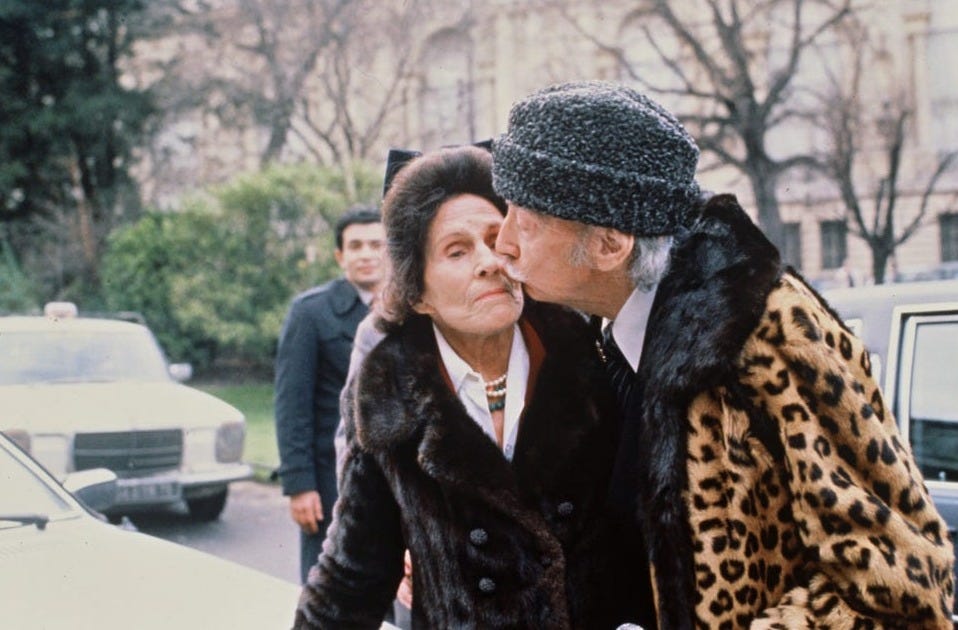
Now, Klein has a new book out titled Surreal: The Extraordinary Life of Gala Dalí (2025), an overdue biography that broadens the conversation beyond Gala’s impact on a man to show how she shaped a movement.
Supplemental Reading
As always, don’t forget to use archive.ph if you can’t access these pieces or any of the ones throughout my Substack!
New York Times: Book Review: Let’s Talk About Adam Ross’s Playworld
Book Culture: Q&A: Learn about the Upper West Side Cinema Center with Co-Founder Adeline Monzier
Violet 22: Aimee Lou Wood’s Eulogy for Shelley Duvall
The New York Times: A Walk Around the Lake During the Pandemic Was Poetry to Their Ears: Aria Aber and Noah Warren Marry in Jamestown, R.I.
World of Interiors: Dizzy Dalí
Air Mail: How Desperate Housewives Shaped Today’s Housewives — and Modern Media
Social Media Round-Up
A section aggregating tweets, TikToks, Notes, etc. that made me laugh, smile, etc. in the past month:
Cocktail of the Month
In their twilight years, Salvador and Gala Dalí published a cookbook, Les Diners de Gala (1973), featuring 136 of their favorite recipes over 12 chapters. Create a cocktail from the collection with the…
Casanova —
Per Far Out Magazine, the cookbook details: “This is quite appropriate when circumstances such as exhaustion, overwork or simply excess of sobriety are calling for a pick-me-up. Here is a well-tested recipe to fit the bill. Let us stress another advantage of this particular pep-up concoction is that one doesn’t have to make the sour face that usually accompanies the absorption of a remedy.”
To make it, combine a teaspoon of ginger and a pinch of cayenne pepper at the bottom of a glass. Add one tablespoon of Campari, then four tablespoons of brandy and two tablespoons of aged brandy (the Dalís used Vieille Cure, which ceased production in 1986). Refrigerate the glass for 30 minutes, then squeeze the juice of one orange into it. As the Dalís write: “Drink…and wait for the effect. It is rather speedy.” Cheers!
That’s all for now!
xo,
Najet






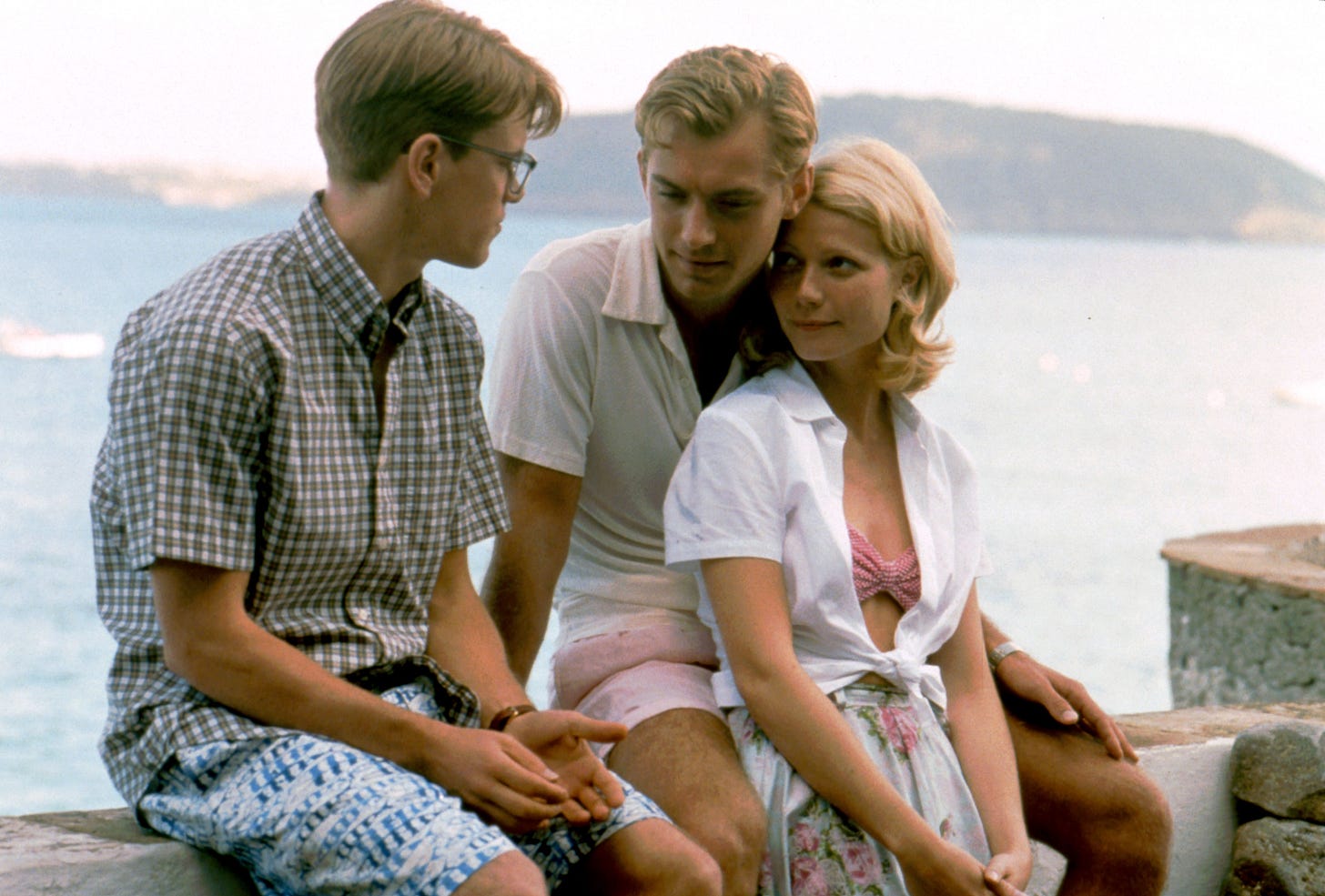
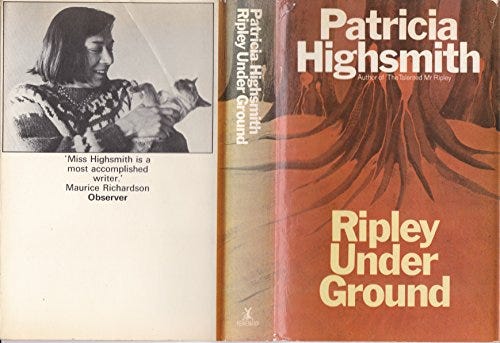


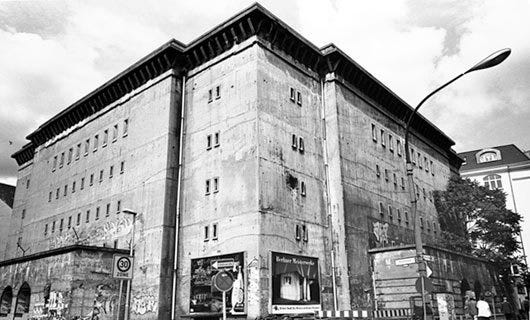
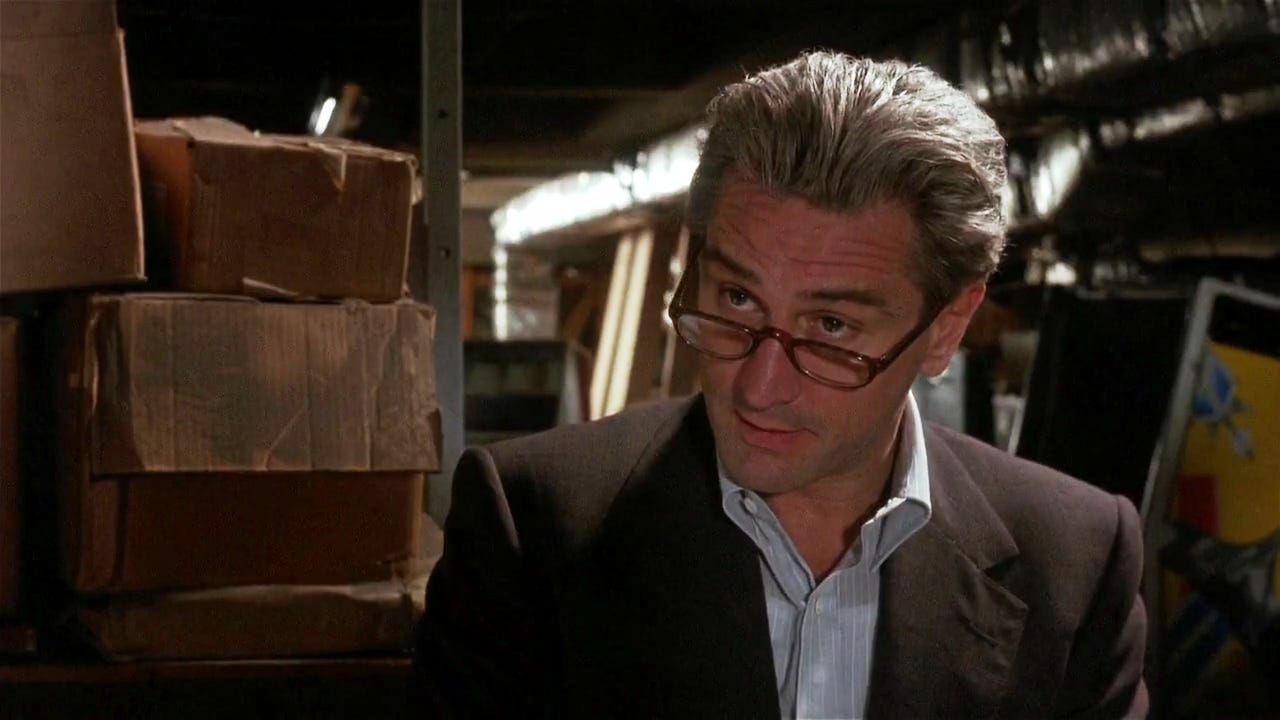


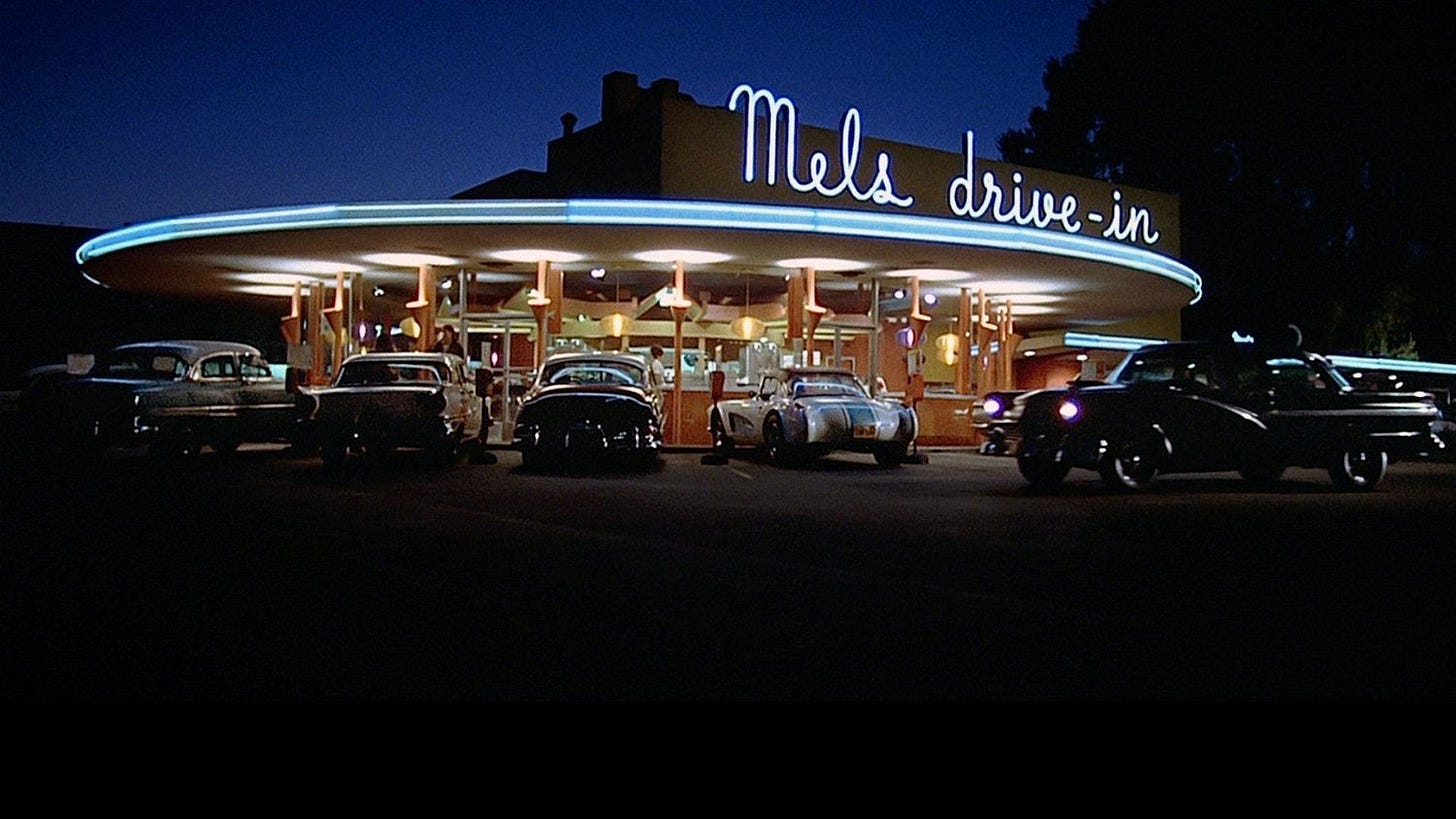

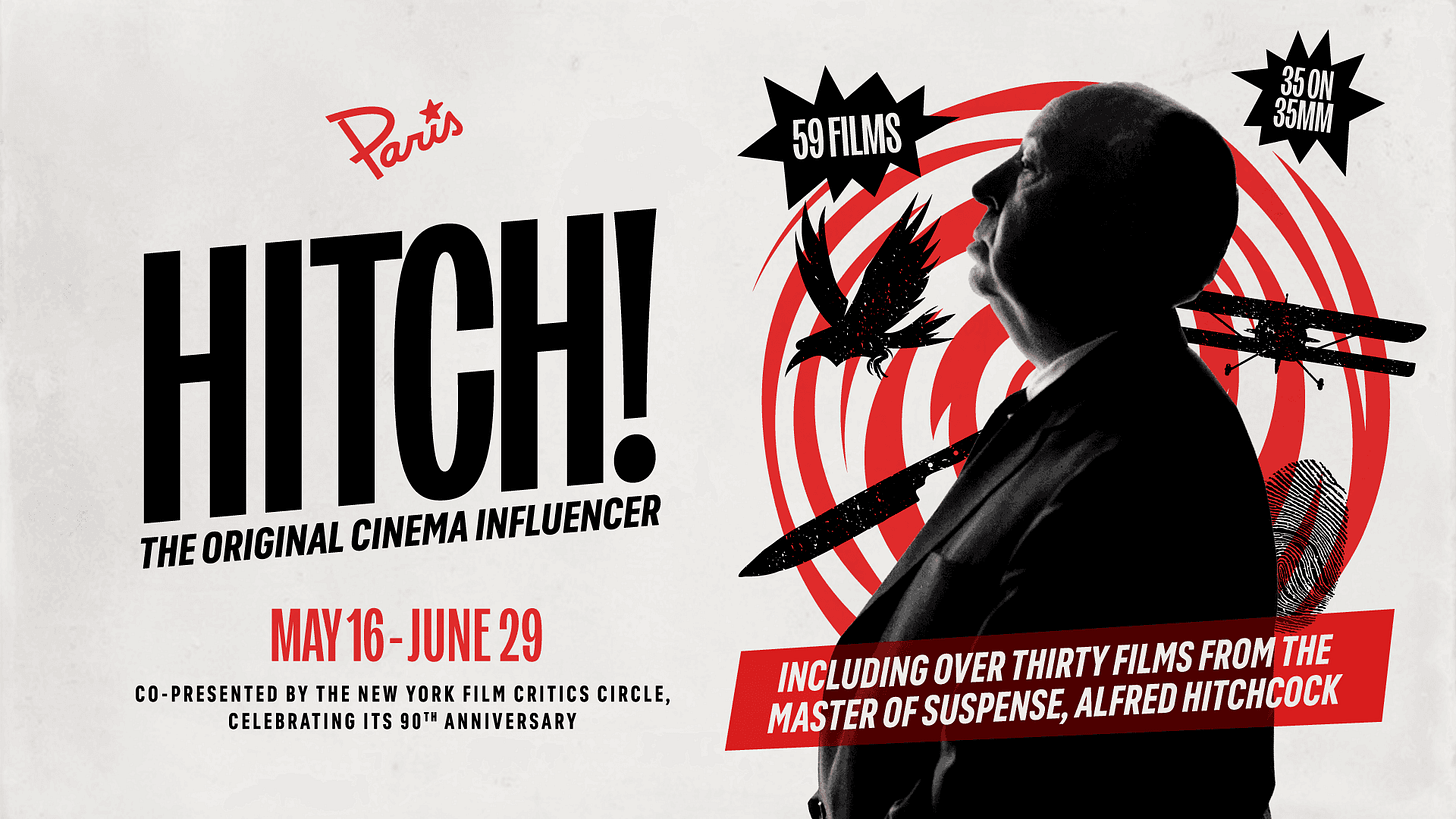



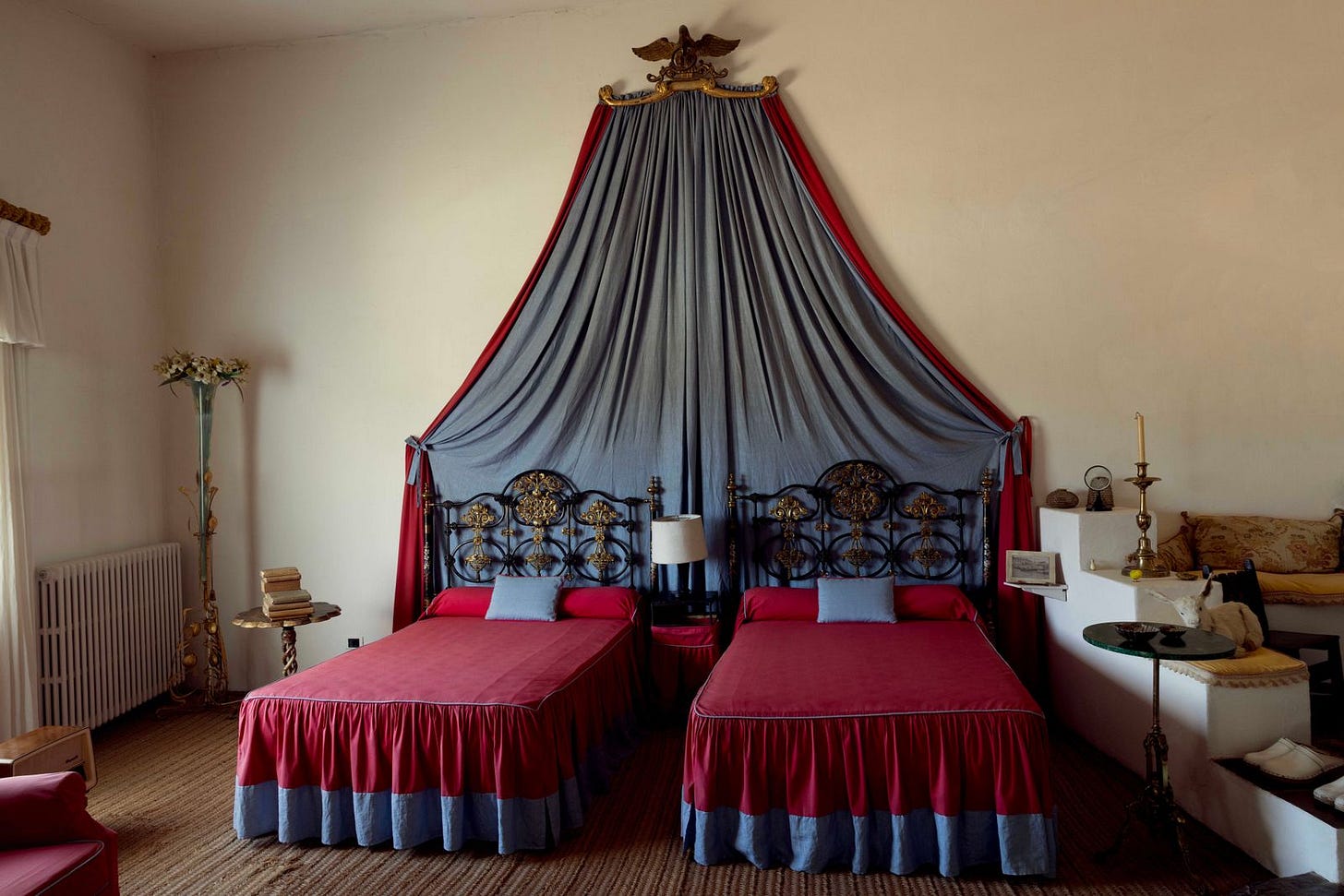
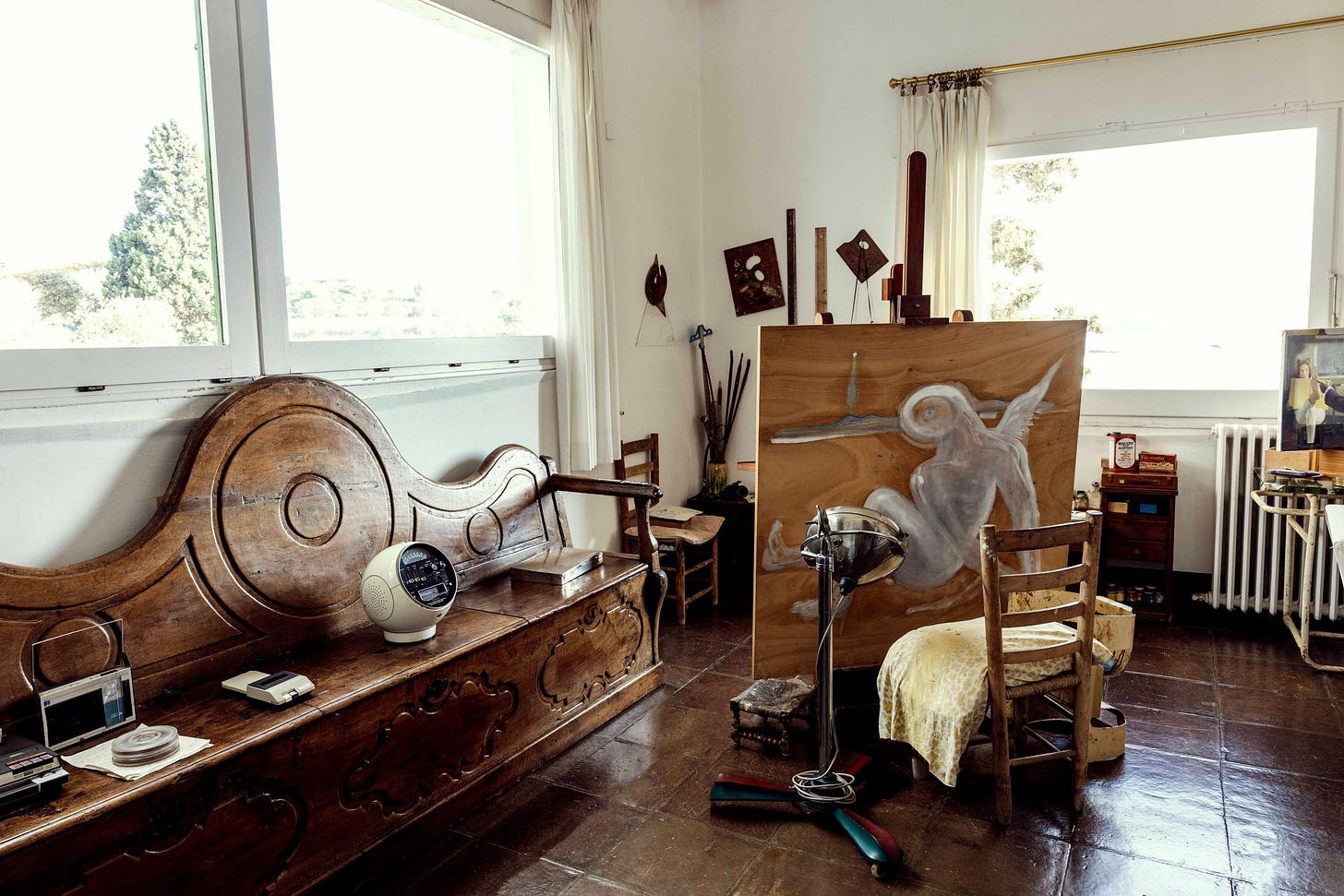
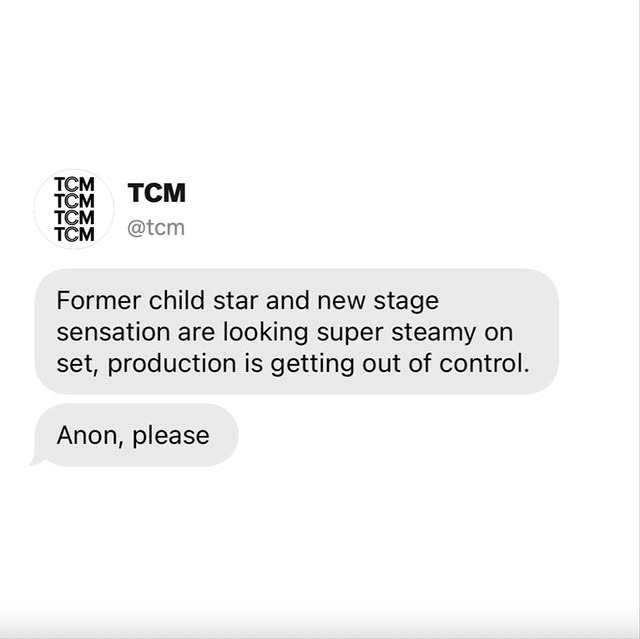

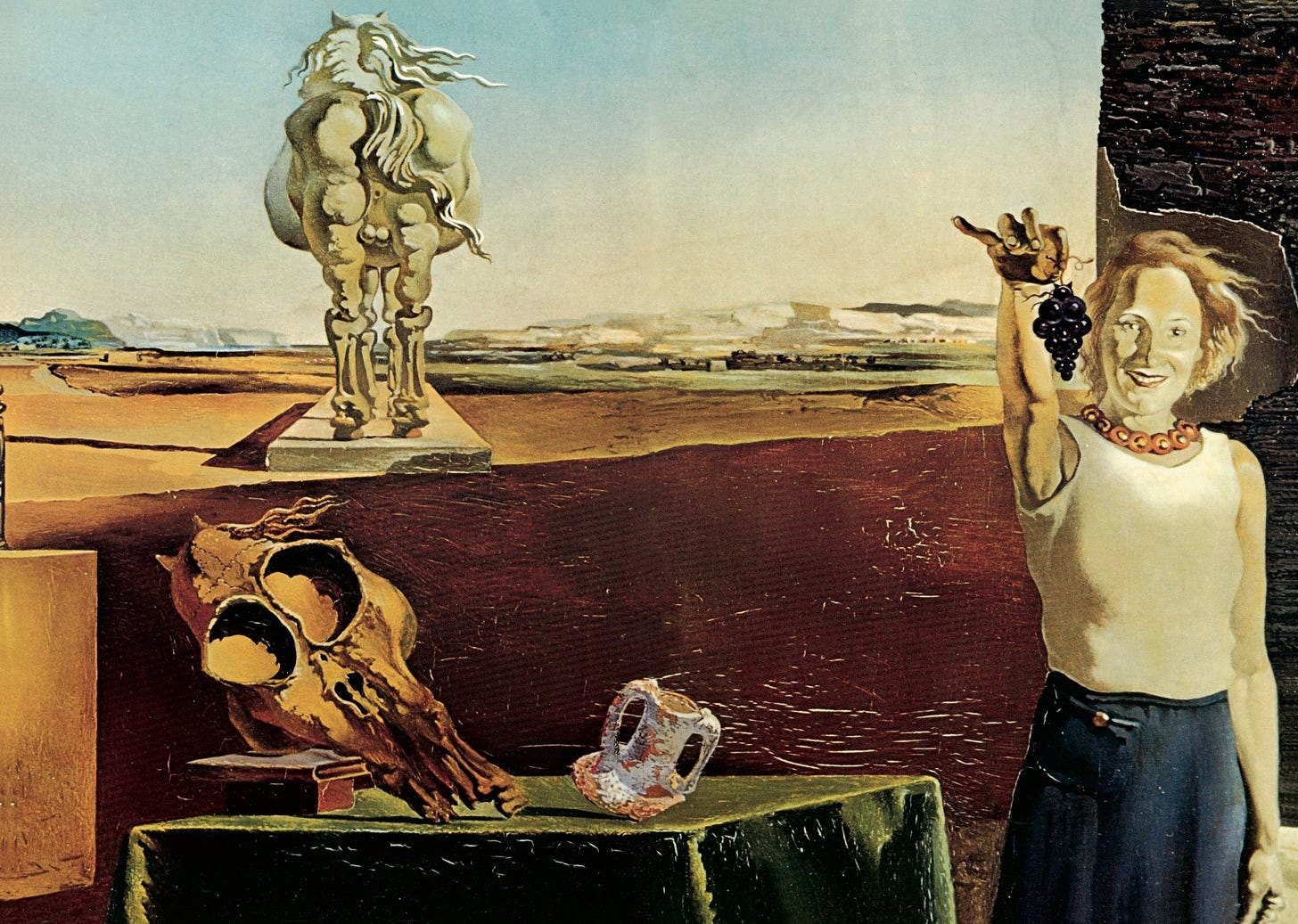
So many good picks in here!! I’m ready for euro summer